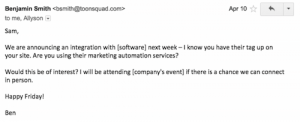When it comes to the Google Display Network (for the sake of brevity, GDN moving forward), the best analogy I’ve heard is that it can be like drinking water from a fire hose. If Peter Griffin’s experience is any indication of how this would go outside of the world of animation, the results aren’t pretty – but today I’m going to share a few tips that should help you avoid a Family Guy-esque fate.
1. Understand The Playing Field
Out of the box, the GDN is not going to deliver leads/sales at the same efficiency as your Search campaigns.
In the realm of Search, users are clearly identifying the problem they are trying to solve. When leveraging display, we can reach the same people, but not at the “moment of truth” – this piece of knowledge leads us to point #2.
2. Identify The Campaign Objective(s)
What are you trying to accomplish through the GDN – building awareness, influencing decisions, closing sales (the list could go on and on…)?
Display will work at every stage of the funnel, but the targeting and messaging needs to reflect what’s important to users. A “Buy Today” call to action likely won’t work well at the top of the funnel if the user has no idea who you are, or what your product benefits are.
3. Choose The Metrics That Matter (Before You Start) & Set Goals
The metrics you select should reflect the funnel stage you are targeting – success looks very different at different stages of the funnel. Here’s some thought-starters:
- Top of Funnel: Unique reach, CTR, on-site engagement
- Mid-Funnel: CTR, on-site engagement, conversion metrics
- Bottom of the Funnel: Conversion metrics
Tip: When benchmarking Search and Display performance against one another, a common mistake advertisers make is comparing their Display CPA against a blended Search CPA. While the networks are vastly different (and should have their own set of goal metrics), advertisers making this comparison should be considering their non-branded Search CPA – this is a more accurate measure of the investment required to attract customers that are unaware of the brand in question.
4. Let The Targeting Tools Do The Heavy Lifting
The Partridge Family said it best – “Together We’re Better”. The GDN has a host of targeting options that, when used together, can eliminate the face-melting consequences of running a campaign wide open. Think with Google has a great overview of the options available here – I’d suggest taking a few minutes to familiarize yourself with the full suite of tools. While the targeting options are comprehensive on their own, the true beauty lies in the fact that they stack together (for example, Contextual + Placement targeting is a great option for insurance companies to target stories on the Toronto Sun about basement flooding with a message about the value of adequate insurance coverage before disaster strikes).
Tip: Aim for a minimum of two targeting tactics in each campaign – at minimum, leverage demographic targeting against a second criteria to ensure you’re hitting your key audience (and exclude the “Unknown” gender and age categories to start – spend your money in the areas that will give you some data to work with when reviewing the reports!)
5. Build Killer Creative
The GDN and targeting tools facilitate the audience, but that’s a far cry from closing sales and justifying a huge raise at the end of the year. If you want to be ready when your boss yells “Show Me the Money”, compelling creative is the key to getting users to click through. Fortunately, you’ve read this far through the guide, and now have some clear goals in mind, understand the funnel stage you’re targeting, and know your audience well enough to identify what will resonate with them. Pull a chair up beside your designer, put together 2+ sets of ads (always be testing!), and you’re almost ready to go!
Tip: Don’t get stuck in the trap of building creative that you or your boss think is great – you need to deliver on what’s useful and relevant to your target audience. The nice thing about the GDN is that you’ll get enough data quickly to determine how effective your message is. If you’re seeing the impressions rack up without any clicks, it’s time to revise either your targeting or your messaging.
6. Hit “Go”…after Review The Checklist
You’re almost ready to launch…here’s the final checklist! These previous steps will simply get your Display campaign ready to go – but I’ve provide a few links that should help you plan for what to do with the traffic once it gets to your website.
1. Campaign Objectives (done)
2. Goal Setting (done)
3. Targeting (done)
4. Killer Creative (done)
5. Build Great Landing Pages (tips)
6. Ongoing Testing Plan (tips)
Post from: Search Engine People SEO Blog
7 Steps To Start A Realistic Google Display Network Campaign
—
Written by Dan Van Meer,
The post 7 Steps To Start A Realistic Google Display Network Campaign appeared first on Search Engine People Blog.
(774)









